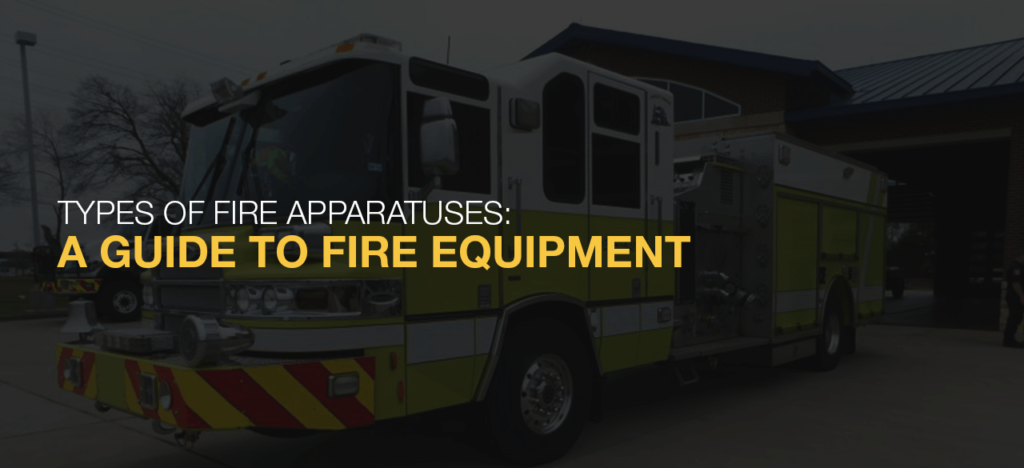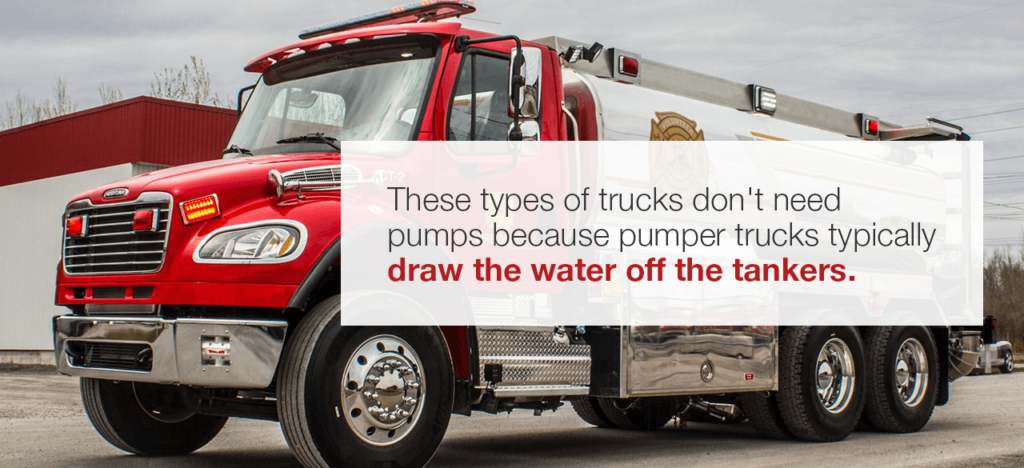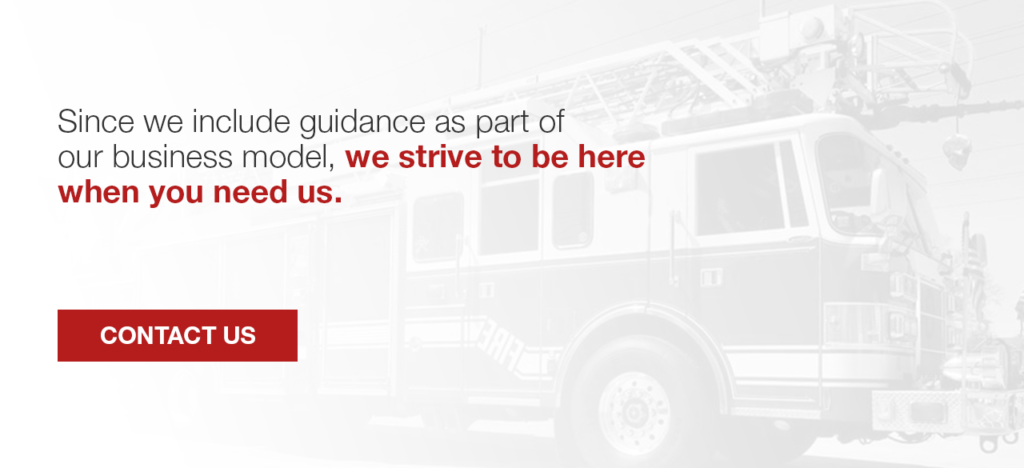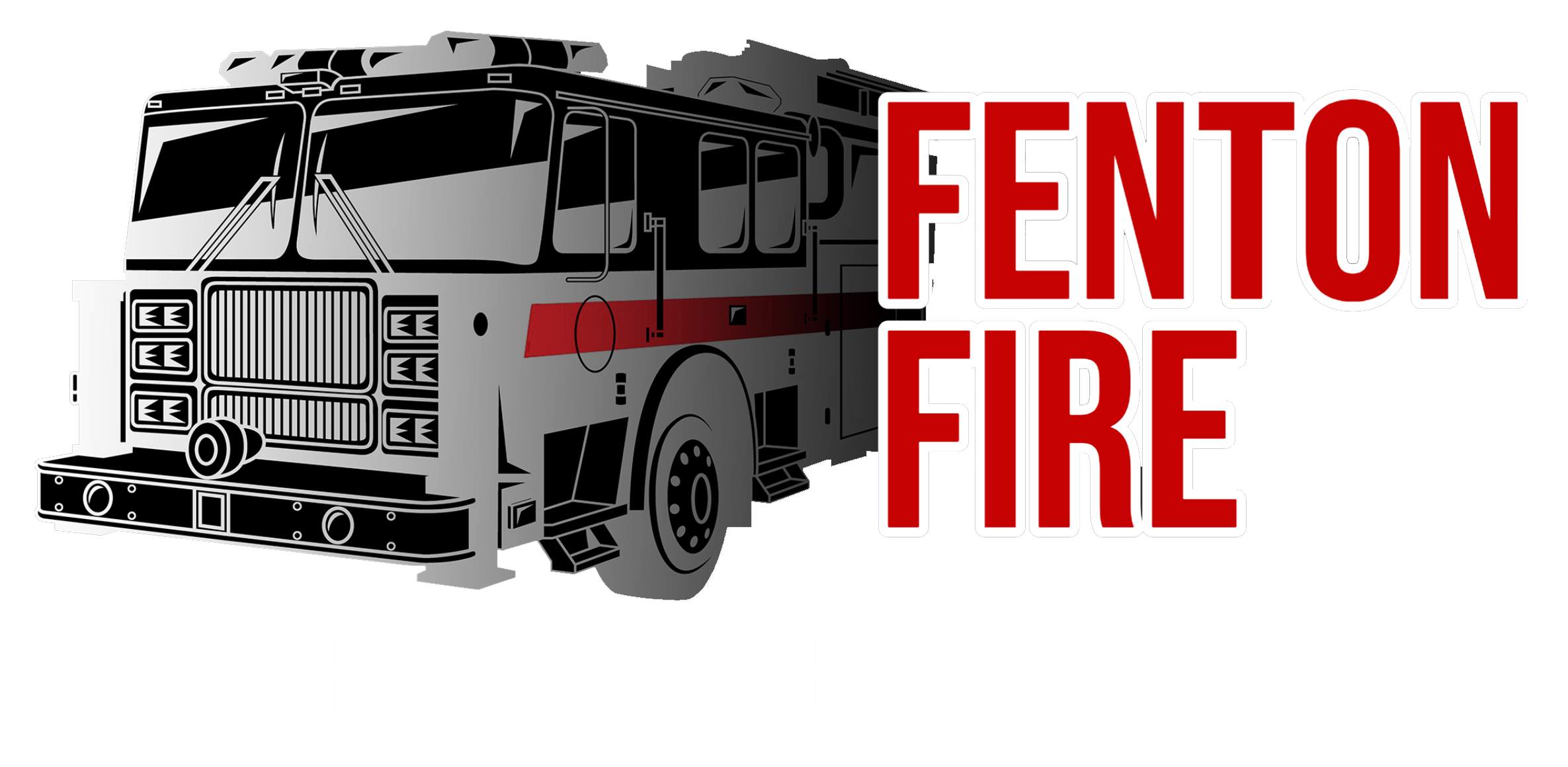
Firetrucks, engines, tankers and other types of firefighting equipment all have qualities that make them unique. If you have ever wondered what makes a tanker different from a pumper, here’s your chance to find out. After reading through the information below, you will be a more knowledgeable buyer, seller or fan of all types of fire vehicles.
Engines and Pumpers
These types of firefighting tools date back to the 1700s in England when firefighters pulled water pumps on carts by hand. They then had to operate the pump manually, but some lucky ones had steam pumps to deliver the stream of water. A century later, horses carried the water pump carts to the scene of the fire, allowing firefighters to focus on getting the blaze out instead of using all their energy to drag the cart.
In 1841 in New York, the first self-driven steam-powered fire pumper premiered. Though the self-propelled idea did not take off immediately, by 1910, fire engines with internal combustion power began appearing more frequently. This form of a water pump on a motorized truck was the predecessor to today’s fire engines. By the 1960s, engines used water pumps that resembled those in use today and had aerials and cherry pickers on some models.
Today, fire engines, also called pumpers, retain their ability to pump water onto a fire, but their pumps and tanks have much larger capacities than those of decades past. These engines typically carry water tanks and hoses that can unleash 1,500 gallons per minute. The National Fire Protection Agency (NFPA) requires pumpers to have an output of at least 750 gallons per minute.
Aerial Fire Trucks
Aerial fire trucks are those that have large, extendable ladders. These ladders are also known as aerials. The aerial operates using hydraulics, and these trucks also have a variety of other ladders for reaching less lofty heights than the aerial accesses. In addition to the aerial and ladders, these trucks have all the equipment firefighters need to enter a locked building, to breathe safely and to rescue trapped people.
According to the NFPA, aerial fire trucks also include water delivery systems that extend along the length of the aerial for elevated firefighting. Perhaps the only downside to aerials is the amount of training and expertise required to position the end of the ladder correctly. With an appropriate level of training, aerial fire trucks provide a vital rescue method for high-rise buildings and a way to deliver water from an elevated level.
If you need extra water flow for higher heights, consider a tower as an alternative to an aerial fire truck. These trucks often require more space with a jack spread of 18 feet compared to the 14 feet to 18 feet of aerial fire trucks. Aerials have the advantage when you need to reach high into buildings but have a tight space on the ground for setting up the ladder and the truck. As larger apparatuses, towers take a toll on roadways and bridges they cross and cost much more than standard ladder trucks. If you need the extra water force or reach of a tower, also consider the costs that these benefits come at in terms of wear and tear and the ability to use the rig.
Quints
Quints get their name from the five jobs these types of trucks can do – pump water, raise an aerial, store hoses, store water and hold ground ladders. Per the NFPA, these apparatuses must include:
- A permanently mounted aerial ladder
- A mounted water pump
- A waterway along the aerial ladder
- Hose storage
- A water tank
- A variety of ground ladders
These highly versatile trucks are an excellent choice for responding with one vehicle. Facilities that lack the funds and space for multiple trucks may purchase a quint apparatus to fulfill the jobs of engines, trucks and tankers.
Even in well-equipped stations, a quint can serve as a valuable tool for when you lack personnel to operate multiple trucks. Since these replace a truck and an engine, you can use a single quint in less space. The smaller size of quints makes them easier to use in towns with narrow streets and less room to maneuver large vehicles.
Tankers and Water Tenders
Tankers, like those on the East Coast call them, also go by the name tenders on the West Coast. Some call these vehicles mobile water supply apparatuses. They bring a source of water to fire scenes that may lack adequate water supply.

These types of trucks don’t need pumps because pumper trucks typically draw the water from portable ponds deployed at the fire scene, which are filled by water from a tanker. NFPA defines these trucks as a means of picking up, carrying and delivering water to the scene. Water tenders are ideal in rural locations that do not have installed fire hydrants.
What sets tankers apart from the water tanks on pumpers is the amount of fluid each can carry. Water tenders have a minimum capacity of 1,000 gallons, whereas pumpers do not have this requirement for their tanks. When driving a tanker, the water tends to slosh around in the tank, making handling difficult unless you take extreme care when making turns. Rolling these vehicles is a severe threat that causes firefighter deaths and accidents. Whether you need to give your drivers extra training or require limited speeds, you cannot allow these vehicles to tip.
The weight of these trucks also poses a driving complication. For a minimum 1,000-gallon tanker, the water alone will weigh over 8,000 pounds. Increase this as the capacity increases. To get such a heavy load moving requires extra engine power, and you will need more braking room to stop. Keep these factors in mind when purchasing and using tankers.
Buy, Sell or Find Fire Apparatus Listings
These examples are not the only types of fire apparatuses you may encounter, but they include the most common ones. If you are interested in seeing other examples of fire apparatuses, browse our listings of used fire equipment.
At Fenton Fire Equipment, we help you to buy or sell your fire apparatuses. If you want to sell your vehicle, we offer free appraisals, whether you sell with us or not. You can also browse our extensive marketplace without pressure to purchase.
Since we include guidance as part of our business model, we strive to be here when you need us. Because we work to reach the highest level of customer service, we will do everything we can to promptly respond to your email within the business day and answer phones during our operating hours.
For more information about buying or selling fire trucks or for answers to any questions, contact us through our online form.

